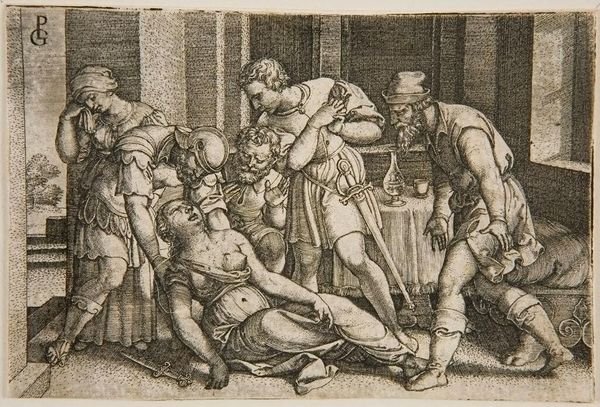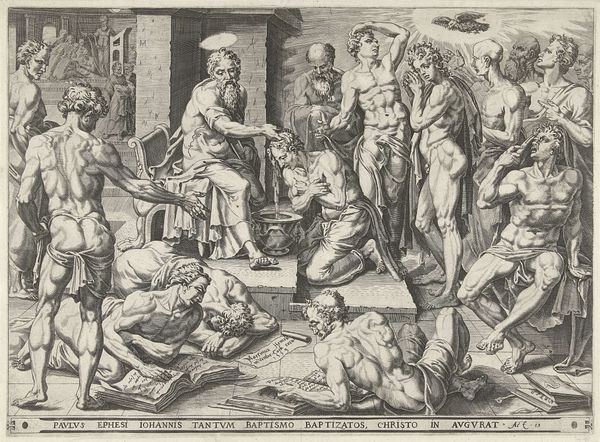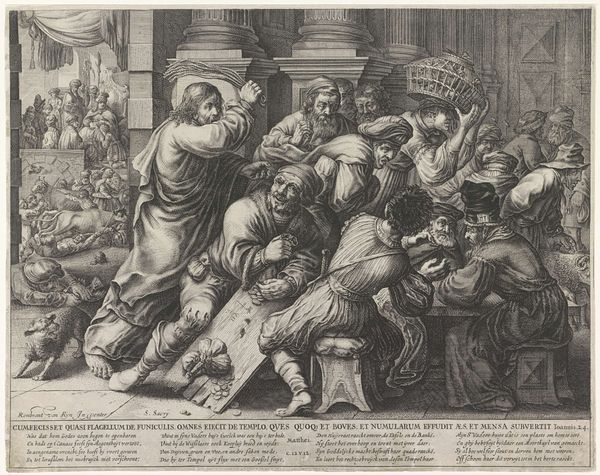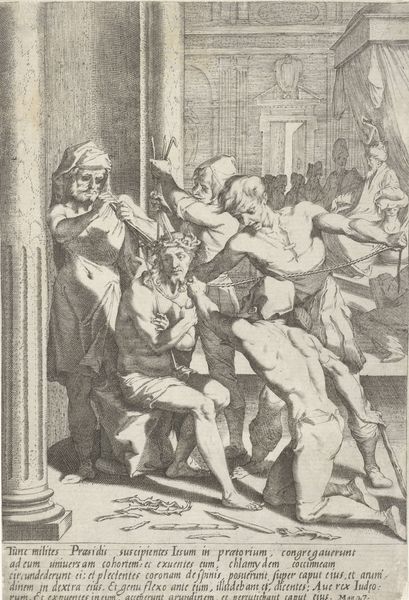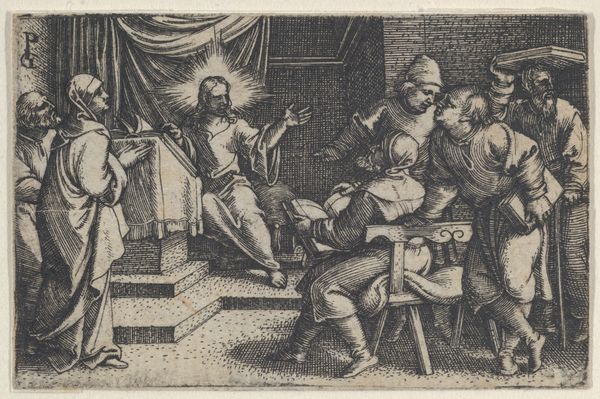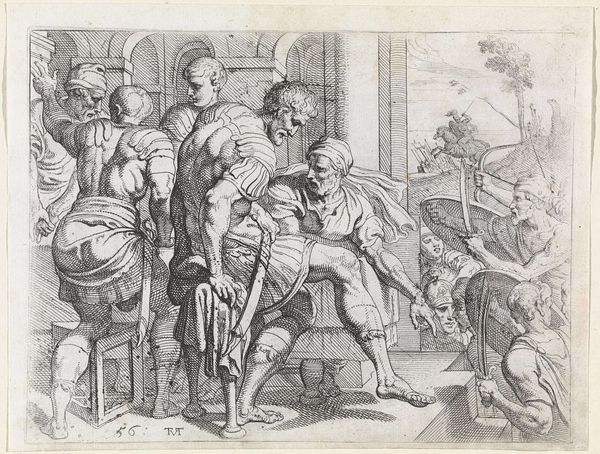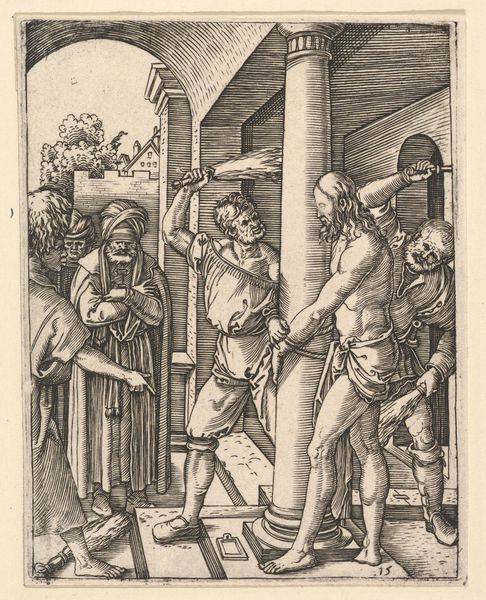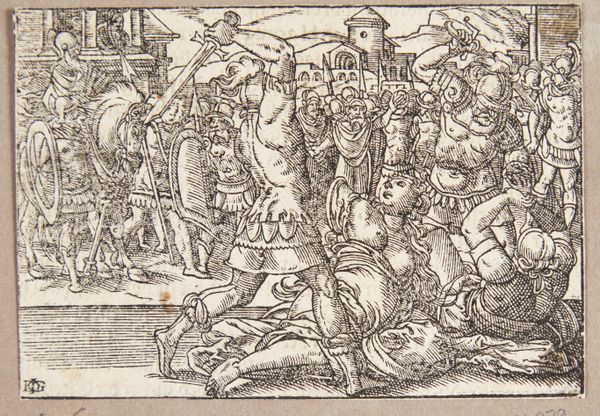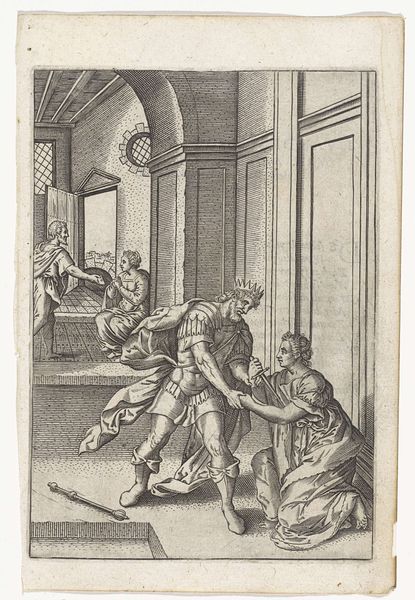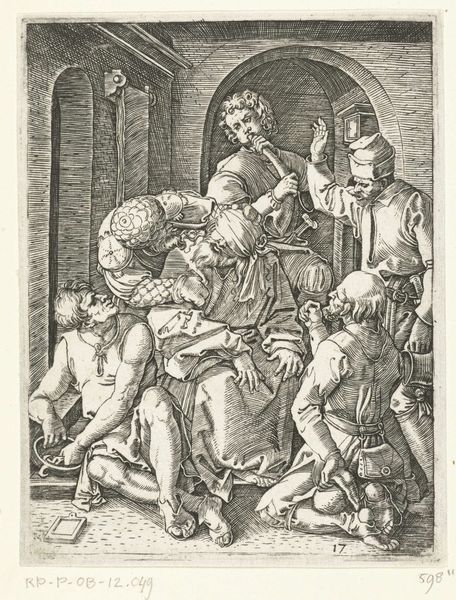
Suicide of Lucretia, from "Scenes from Roman History" 1541 - 1552
0:00
0:00
drawing, print, engraving
#
drawing
#
narrative-art
# print
#
figuration
#
history-painting
#
italian-renaissance
#
engraving
Dimensions: Sheet: 3 1/8 × 4 5/8 in. (7.9 × 11.7 cm)
Copyright: Public Domain
Curator: Georg Pencz created this engraving, dating it between 1541 and 1552, as part of a series entitled "Scenes from Roman History." It’s now housed at the Metropolitan Museum of Art. Editor: A rather grim tableau, isn't it? The diagonal composition emphasizes the lifeless body and creates a dynamic sense of drama within the stark confines of the scene. The varying textures achieved through engraving are quite compelling too. Curator: It is certainly intense. The image depicts the suicide of Lucretia, a noblewoman whose rape by Sextus Tarquinius led to a revolt and the establishment of the Roman Republic. Pencz captures the moment after Lucretia’s self-inflicted death, surrounded by witnesses to her tragedy and the event that would catalyse significant social and political change. Editor: Yes, observe how Pencz renders light and shadow through precise hatching and cross-hatching, focusing the viewer’s eye on Lucretia. There is an interesting contrast between the smoothness of her skin and the more angular drapery and architecture around her. Notice too the strategically placed sword, a visual echo of her defiance. Curator: The presence of the male figures surrounding Lucretia highlights the patriarchal structures of Roman society. We might also consider the implications of representing a woman's trauma as a catalyst for political change. How much agency does Lucretia truly have in this narrative, considering that her body becomes a symbol of resistance after her death? Editor: Semiotically, we can decode the layers embedded within this engraving. The gaze of each figure, the specific folds of their clothing, even the objects like the sword and the carafe, each act as signifiers contributing to a greater understanding of Pencz's visual rhetoric. Curator: Precisely. Considering feminist readings of history, one can argue about how Lucretia’s act is not only one of agency, but the sole option she had to regain dignity after such an atrocious event. Her suicide served as an indictment of the moral failings of the ruling class. The tragedy speaks to our own contemporary struggles, such as sexual assault, class struggle, and political responsibility. Editor: Indeed. Thinking through the elements of formal organization alongside layers of historical context allows one to perceive new, and interesting relationships between aesthetics and ideas. Curator: Ultimately, I agree, we have to keep a critical view of these images, considering the time, its culture and the layers of power enmeshed within. Editor: An exercise, if you will, in uncovering not just what the artwork shows us, but how it shapes what we see.
Comments
No comments
Be the first to comment and join the conversation on the ultimate creative platform.
